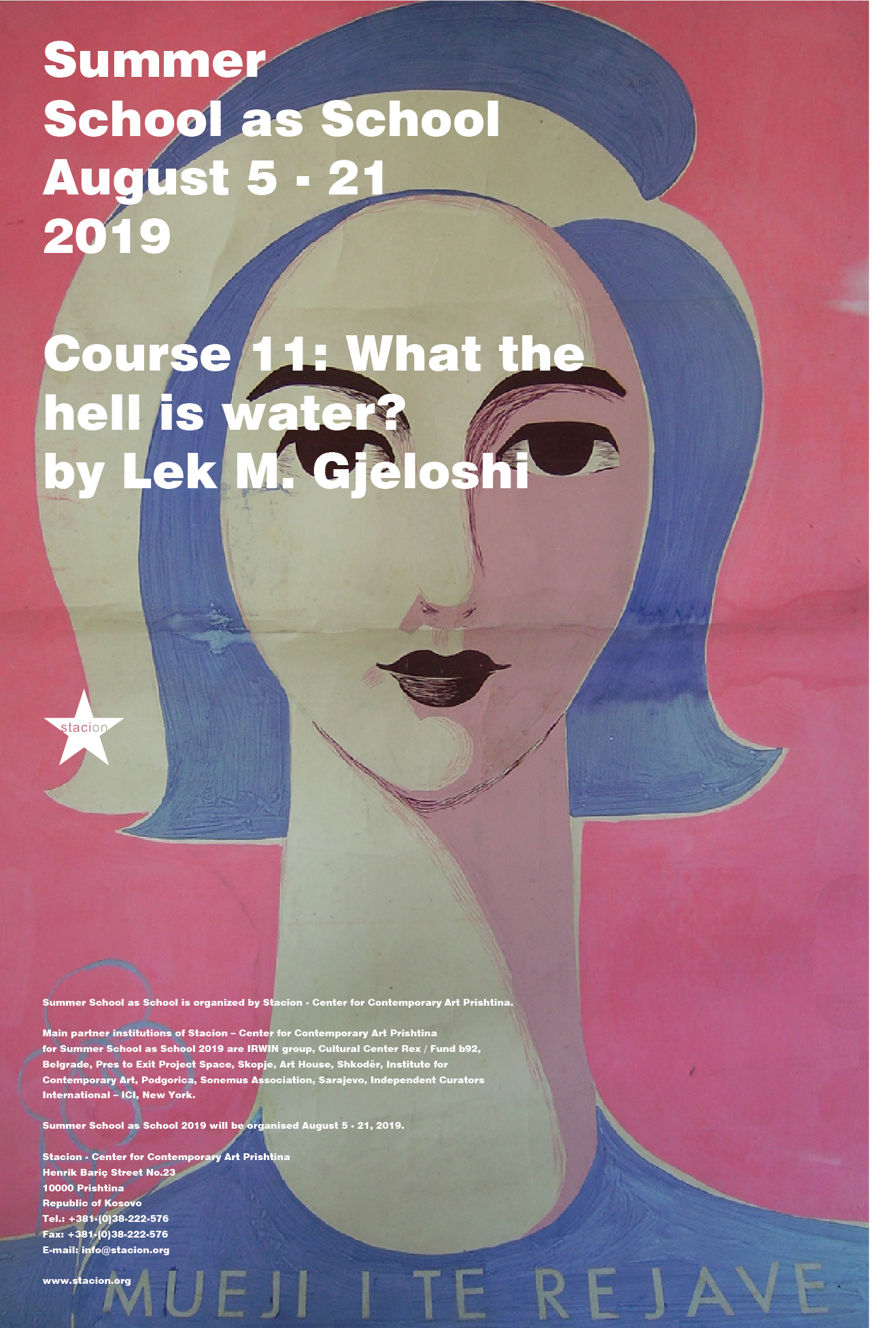
Course 11: What the Hell is Water?
by Lek M. Gjeloshi
12 – 18 August, 2019
Course Description
The title of the course is the outcome of a conference by David Foster Wallace, held in 2005. Invited to lecture at a US University graduation ceremony, he conveyed an anecdote to the students: “There are these two young fish swimming along and they happen to meet an older fish swimming the other way, who nods at them and says “Morning, boys. How’s the water?” And the two young fish swim on for a bit, and then eventually one of them looks over at the other and goes “What the hell is water?”
David Foster Wallace’s parable, just like his entire speech, does not tell much about where the older and wiser fish is going, but reflects on considering something essential, which the younger fish seem to naturally ignore – Water.
At this designated area for indifference, where the source of our courses interest lies, it is necessary to question the report of each and every one of us between the ordinary and general disregard for contemplation. The task that is entrusted to a sensitive perception of space is radical. How can we read the water metaphor? At what point is the subconscious important for the areas that intangibly cover our actions? On top of it all, in what form does the ordinary or disregard for contemplation stimulate one action and to offer us the opportunity for astonishment?
The structure of the course follows primarily a theoretical and dialogical path. David Foster’s essay, Wallace, will be accompanied by a text by Italian philosopher Giorgio Agamben, also held at a university ceremony in 2008. The text reckoned with the “contemporary”: it saw the discrepancy of the individual with the present and its tendencies.
Among other discursive mediums, the course will end with a projection of the film “Sátántangó” (1994), by Hungarian director Béla Tarr. The movie is 7.5 hours.
Biography
Lek M. Gjeloshi (1987, Shkodër, Albania) studied Visual Arts at Fine Arts Academy of Florence (2010). His artistic practice mainly focuses on the elaboration of a particular intensity emanated by the absence of a predetermined object of investigation. Passing through the video to site-specific and other conceptual actions, the direct application – the visual or the visible ones – of his work is realized in the intimate relation established with the modeled and found space.
His solo exhibitions include: “Everlast” curated by Vala Osmani at Stacion – Center for
Contemporary Art (Prishtina, 2019); “Sleepwalkers” at Zeta Gallery (Tirana, 2018); “All my colours turn to clouds” at Villa Romana (Florence, 2016) and “Off-cells” at Civic Gallery of Shkodër (2016). In 2016 he was the winner of “Ardhje Award” for Young Visual Artists, organized by TICA – Tirana Institute of Contemporary Art in Albania. In 2015 he was the winner of the “Idromeno Prize” for Young Albanian Artists. He has participated in many group exhibitions from 2007, including: “Albania is not Cuba”, curated by Amy Zion at !!!Sección A R T E_!!! Update [No.22], El Paquete Seminale, (Cuba, 2019); “Ex Gratia” curated by Adrian Paci and Rischa Paterlini at Collezione Iannaccone (Milan, 2018); “A time for dreams” curated by David Elliott at Moscow Museum of Modern Art (Moscow, 2014); “Fuori Posto”, “Nuovo Cinema Masaccio” and “Lontano da dove?” curated by Pier Luigi Tazzi between Casa Masaccio and Lanfranco Baldi Foundation (Florence, 2014, 2013, 2012). In 2018 he was artist-in-residence at Residency Unlimited in New York.
Participation
10 participants will be selected to participate in this course. Eligible participants must read the Terms, fill out the application form, upload the required documents and submit the application form. Incomplete applications will not be considered.
Scholarships are available for participants from Kosovo.
A limited number of scholarships, that cover the participation fee, are available for international participants.